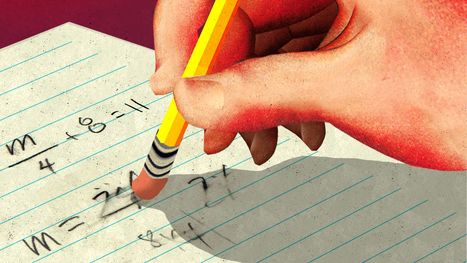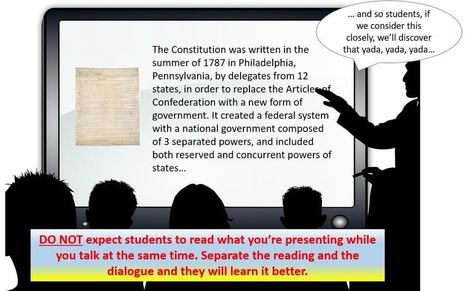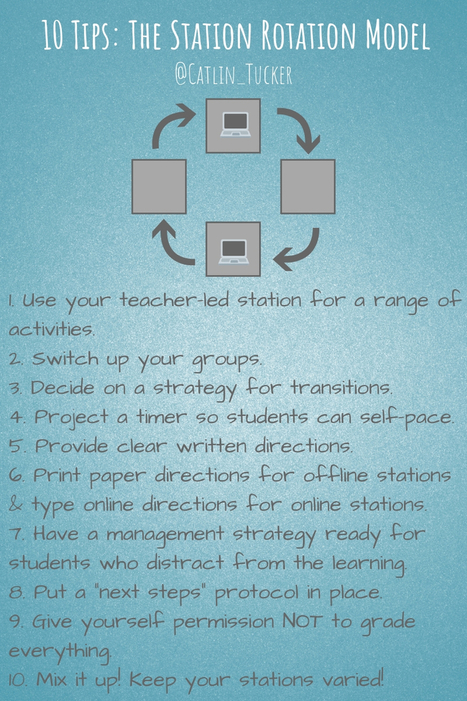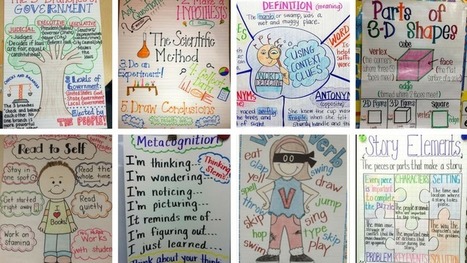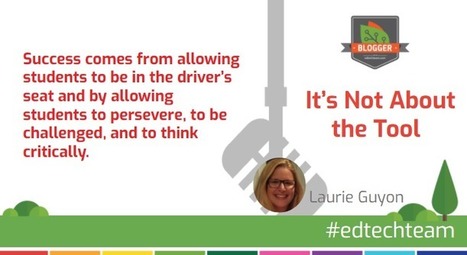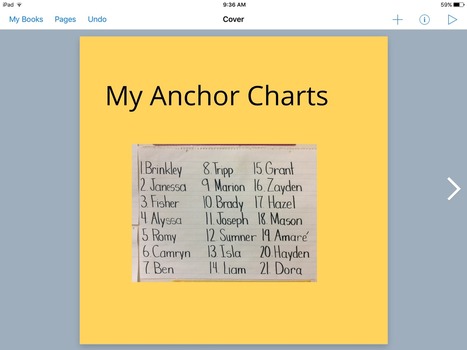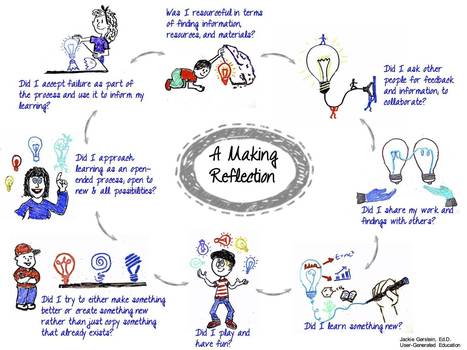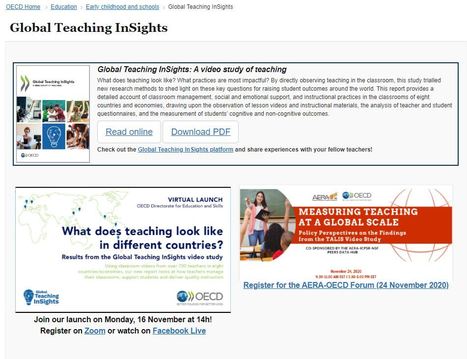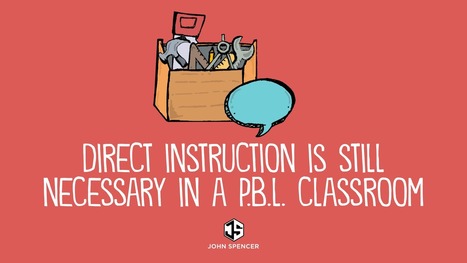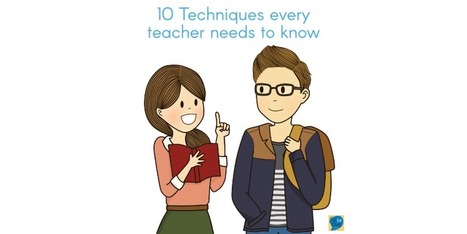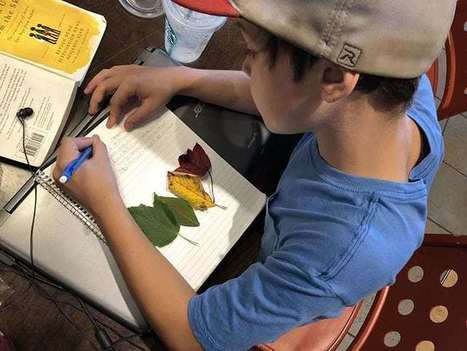BY VERONICA M
Research and publish the best content.
Get Started for FREE
Sign up with Facebook Sign up with X
I don't have a Facebook or a X account
Already have an account: Login
Teaching and learning in the 21st Century - meeting the pedagogical challenges of digital learning and innovation for the iGeneration
Curated by
Tom D'Amico (@TDOttawa)
 Your new post is loading... Your new post is loading...
 Your new post is loading... Your new post is loading...
Julian Zapata's curator insight,
February 19, 2020 10:01 AM
This academic article is very helpful for understanding the ways of how knowledge is built and how constructivism can be used for fruitful lessons. Knoing how learning is constructed is vital for any teacher or professor. This will help them to see a greater picture and so it will open new perspectives for lessons´planning and development. In the same way, this type of information helps instructors to understand possible issues with learners and work out solutions for them. 
Valentina Osorio's curator insight,
February 19, 2020 10:04 AM
Since constructivism is focused on student-centered phylosophy and active participation, it is my belief that this article is very usefull for me as a teacher. I can include some constructuvism practices during my lessons, for my students, in order to they can be able to create and discover their own knowledge from their personal experiences. Also, they will constructed the learning through this phylosophy in terms of: how to learn? - problem-solving - higher order thinking and collaboration. Besides, since it is based on student-centered, it will help me to encourage them to participate, make mitakes, learn from them; all this process thanks to all the input and guidelines that i will provide, and that the constructivism allows me to provide too.
max zeglier's comment,
February 21, 2020 6:18 AM
<a href="https://lingadispensary.com/?product=buy-kingpen-cartridges-online">buy-kingpen-cartridges-online</a>;
<a href="https://lingadispensary.com/?product=moonrock-clear-carts">buy-moonrock-carts</a>; <a href="https://lingadispensary.com/?product_cat=zodiaks-moonrock-carts">dr-zodiak-carts</a>; <a href="https://lingadispensary.com/?product=moonrock-clear-carts">moonrock-clear</a>; <a href="https://lingadispensary.com/?product_cat=muha-meds">buy-muhameds-online</a>; <a href="https://lingadispensary.com/?product_cat=zodiaks-moonrock-carts">dr-zodiak-carts-price</a>; <a href="https://lingadispensary.com/?product=trainwreck-vape-cartridge">710-kingpen-gelato</a>; <a href="https://lingadispensary.com/?product=buy-sundae-driver-online">buy-sundae-driver-online</a>; <a href="https://lingadispensary.com/?product=trainwreck-vape-cartridge">kingpen-trainwreck</a>; <a href="https://lingadispensary.com/?product=buy-gkua-online">buy-gkua-online</a>;
Hannah Jacobs's curator insight,
May 19, 2017 6:28 PM
Think. Pair. Share. A simple idea that allows students to teach other students and learn from each other as well.
Stacey Mendan's curator insight,
May 27, 2017 10:04 PM
I am a big fan of peer-to-peer teaching. There is plenty of evidence to suggest: (i) we learn effectively when being taught by our peers; (ii) teaching someone a concept is an effective form of consolidation. However facilitating peer-to-peer learning can be challenging so guidance and advice can be useful.

Patrice Bucci's curator insight,
September 20, 2016 12:35 PM
Maker ed... hmm... love the "framing and reflecting"
|

lorin.ward@cqumail.com's curator insight,
May 13, 2020 5:01 PM
What a fantastic idea to incorporate differentiation in the classroom. Students can hear the worksheet instructions as many times as they require. Also very useful for students who have been absent or are working from home during Covid 19.
Barbie Cherrington's curator insight,
May 15, 2020 8:33 PM
Students can create and share their videos. (video news recording, English short clip, math working out explanations). can be a bit tricky to navigate at first so an introductory lesson may be needed

Lucia Boettjer's curator insight,
September 19, 2020 9:10 PM
Reminder of PBL isn't hands off when the students begin. Teachers need to check for understanding. PBL doesn't mean that the students are left to learn everything themselves.
FROILAN ROA GARNICA's curator insight,
January 31, 2019 8:51 PM
SUCESIÓN TESTAMENTARIA E INTESTADA Sucesión testamentaria: Sucesión que se organiza, en todo o en parte, conforme a la voluntad del causante, expresada en testamento. Por tanto, tenemos una libertad testamentaria que lo que implica es una facultad al individuo de elegir a sus sucesores después de su muerte. Esa elección se lleva a cabo por medio del TESTAMENTO, herramienta para determinar a quien le corresponderán los bienes del causante. En Guatemala NO existe la figura de herederos forzosos, por lo que en este tipo de sucesión, la voluntad del testador debe estar debidamente expresada, ya que la ley exige formalidades extremas para este tipo de sucesión. Sucesión intestada: La sucesión intestada es aquella en ausencia de testamento válido o eficaz, o más bien, carencia de voluntad del causante expresado. Dicha sucesión tiene lugar cuando: - No hay testamento - Falta condición puesta a la institución de heredero o el instituido muerte antes que el testador o es incapaz de heredar o repudio la herencia. - Cuando no hay heredero instituido y el testador no ha dispuesto de todos sus bienes en legados. - Cuando el testador ha dejado de disponer de alguno o algunos de sus bienes. Nuestro ordenamiento jurídico pone al caso leyes supletorias cuando la persona no haya otorgado testamento. Por lo tanto suple la ausencia de testamento en los parientes más cercanos del testador y en ausencia de parientes el orden siguiente sería el Estado y las Universidades en partes iguales. Herencia y legado: Debemos entender como primer punto ¿qué es lo que se hereda? En general, se hereda el patrimonio que existía al momento de la muerte del causante. Es decir, se heredan los bienes, derechos y obligaciones que no se extinguen con la muerte de la persona. La herencia es vista en nuestra legislación como la asignación a título universal. Es importante mencionar que el heredero no responde por la totalidad de las deudas que hereda en la masa hereditaria. Es decir, solo responde de las deudas y cargas de la herencia hasta donde alcancen los bienes de ésta.

Irma Maldonado's curator insight,
September 14, 2018 4:37 PM
Working with special needs students, I know they can learn and they deserve it.

Kim Toll's curator insight,
May 14, 2017 8:17 PM
It seems incomprehensible to not use some kind of technology to enhance learning as there is an abundance of quality apps and tools online to use. Teachers want to use inexpensive, user-friendly tools that improve student learning. We, as teachers need to use this tech as our assistant – one that is present in the classroom with us, but not overwhelmingly. We should never use tech that does not serve our purpose. It’s not about technology replacing any of our current practices—it’s about the use of those tools to aid in the successful delivery of education. One of the Modern EdTech resources mentioned in this article is Minecraft. Minecraft is a collaborative game, and students actively work in competitive ways, but they can also work together to solve problems and challenges. This could easily be used to transmute learning to the Modification and Redefinition levels of the SAMR model. Teachers can use this as an opportunity to build digital citizenship skills. As students play, teachers should observe and give feedback with checklists and rubrics. Teachers can also facilitate discussions and reflections to support each student in effectively communicating and collaborating. 
Adam Sherwood's comment,
May 18, 2017 7:08 AM
Thanks for sharing/scooping this Ki, a great schema to follow, I especially like Brookings 'tips' for embedding tech/digital in lesson - with clarity of purpose.

Adam Sherwood's curator insight,
May 18, 2017 7:09 AM
Particularly like Brookings 'tips' for embedding tech/digital throughout classroom - provides clarity of purpose. |





